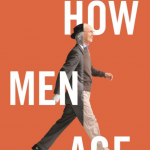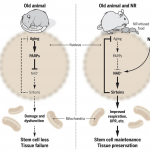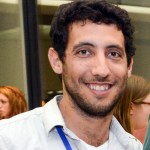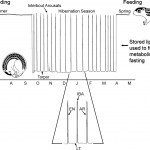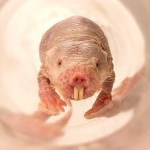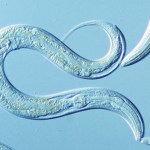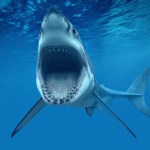aging
A new article published in Physiological Reviews compared some remarkable similarities and differences between naked mole rats and humans. Both are relatively long-lived, highly social and have low natural selection pressures. But, this is about all they have in common. While humans are prone to developing age-related cancer, diabetes, heart disease and dementias, naked mole rats are rather resistant to these diseases. Instead, naked mole rats appear to maintain a youthful state throughout their long lives of 30+ years, compared to a mere 3 years for a mouse. To top it off, they do not…
Many years ago, Mel Konner, Marjorie shostak, and Boyd Eaton wrote "The Paleolithic Prescription: A program of diet and exercise and a design for living." (It is hard to find these days. To find it and related titles on Amazon, look for this book first, and track the PP down via the author name Konner.)
(Added: You can probably get the The Paleolithic Prescription here.)
Richard G. Bribiescas is professor of anthropology and ecology and evolutionary biology at Yale University, where he also serves as deputy provost for faculty development and diversity. He is the author of Men:…
Video of C. elegans from Wikipedia. https://upload.wikimedia.org/wikipedia/commons/b/be/CrawlingCelegans.gif
A new study conducted by researchers at Northwestern University examined the costs of reproduction in roundworms, otherwise known as C. elegans. They discovered that male roundworms can send two kinds of pheromones that prime females for reproduction. One type of pheromone they studied sparks the onset of puberty in young female worms while the other prolongs fertility in aging females. The problem is that these changes come at a cost as it …
Skeletal muscle function and structure change as we age. Humans typically experience a loss of muscle mass or muscle weakness which can greatly reduce mobility and stability. While much is known about aging skeletal muscle in humans and rodents, less is known about horses, which are rather athletic animals that are living longer due to advancements in veterinary care and retirement programs. Researchers from the University of Florida decided to explore how aging effects skeletal muscles of horses. To do this, they examined gluteus medius (speed and locomotion)…
This is great news if you are a mouse!
Here's the summary of the paper:
NAD+ repletion improves mitochondrial and stem cell function and enhances life span in mice, by
Hongbo Zhang, Dongryeol Ryu, Yibo Wu, Karim Gariani, Xu Wang, Peiling Luan, Davide D’Amico, Eduardo R. Ropelle, Matthias P. Lutolf, Ruedi Aebersold, Kristina Schoonjans, Keir J. Menzies, Johan Auwerx, (here, if you subscribe to Science.)
The oxidized form of cellular nicotinamide adenine dinucleotide (NAD+) is critical for mitochondrial function, and its supplementation can lead to increased longevity. Zhang et al. found that…
A few of the recent pieces I've liked:
Alana Semuels in The Atlantic: How Poor Single Moms Survive
Nina Martin of ProPublica interviews David Cohen: For Abortion Providers, a Constant Barrage of Personalized Harassment
Terry Fulmer at the Health Affairs Blog: Independence -- It's What Older People Want
Charles D. Ellison at The Root: Wake Up, Black People. The Supreme Court Is Poised to Drop a Bomb on You
Vanessa Heggie in The Guardian: World AIDS Day: How AIDS activists changed medical research (also, it's not a new publication, but World AIDS Day was a good opportunity to re-read this…
I'm not going to say that Ron Howard is old or anything, but he isn't Opie any more. (And, in fact, it has been fascinating and inspiring to watch his career, by the way.) Anyway, Howard produced a new documentary with National Geographic called "Breakthrough: The Age of Aging, which premieres Sunday, November 29 at 9 pm et on National Geographic Channel. And, pursuant to this, National Geographic's web site is sponsoring a Roundtable on the topic. The roundtable addresses the question, "By treating aging as a disease are we just prolonging the inevitable or can we change the course of our…
Ziv Zwighaft
Ziv Zwighaft is a research student in the group of the Weizmann Institute’s Dr. Gad Asher. Their new findings reveal some intriguing connections between our circadian clocks – which tick according to cycles of day and night – metabolism and aging. Here is his description:
King Solomon said: “There is a time for everything, and a season for every activity under the heavens.”
Our research tries to take this insight into the condition of living creatures a few strides forward. How strictly does it apply? Our lives are regulated by a biological clock – it’s actually many clocks…
A few of the recent pieces I've liked:
Two related pieces at ReportingonHealth.org: Rita Beamish, "Older Americans Act limps along at 50" and Ryan White, "Intensive program keeps elderly at home out of nursing home"
Gillian B. White in The Atlantic: Unplanned Births: Another Outcome of Economic Inequality?
Mike Paarlberg in the Washington City Paper: Workers' Fights ("Unpaid wages, uncompensated injuries, and unjust firings: A look at the margins of the DC labor market")
Nikole Hannah-Jones in Politico Magzine: A Letter from Black America: Yes, we fear the police. Here's why.
Erika Check…
Image from the American Physiological Society's website.http://www.the-aps.org/mm/Conferences/APS-Conferences/2014-Conferences/…
Wednesday was the last day of the meeting that culminated in a closing banquet with an awards session to honor students who had exceptional presentations. What an impressive group of young comparative physiologists! The plenary lecture was given by Dr. Steven Chown (Monash Univ, Australia). He spoke about climate change forecasts and continuing environmental changes and how important it is to understand how animals adapt to changing conditions in order to…
Image from the American Physiological Society's website.http://www.the-aps.org/mm/Conferences/APS-Conferences/2014-Conferences/…
I am really excited about the comparative physiology conference that starts this weekend in San Diego! Here is a press release about the meeting (author Stacy Brooks from the American Physiological Society):
Bethesda, Md. (September 25, 2014) — More than 400 comparative and evolutionary physiologists will gather to present new research and discoveries in animal physiology at the American Physiological Society’s 2014 intersociety meeting “Comparative…
Image of a naked mole rat from www.animals.sandiegozoo.org
The naked mole rat is the longest lived rodent species (>31 years). Unlike most mammals, they seem resistant to many age-associated ailments until much later in life, making them an exciting model of healthy aging. They are also resistant to the development of cancer as mentioned in this prior post.
According to the CDC, cardiovascular disease is currently the leading cause of death in the United States, claiming the lives of roughly 600,000 people annually (or 1 out of every 4 deaths). In a new study published in the American…
Image of C. elegans from http://www.easternct.edu/~adams/C.eleganslanding.html
New research published in PLOS Genetics shows that starving C. elegans (Caenorhabditis elegans) during the late larval stage of development when the worms are undergoing tissue growth and formation halts cellular activity at previously unknown checkpoints in their development. These findings show that nutrition is an important cue to signal whether or not the worms should continue on to the next stage of development. Interestingly, the two-week starvation period actually doubled the lifespan of the worms as…
Additional highlights from the Comparative Physiology posters presented at the 2014 Experimental Biology conference in San Diego, CA:
TA White, G Evans, GC Verzosa, T Pirtskhalava, T Tchkonia, JD Miller, JL Kirkland, and NK LeBrasseur. "Aging and cellular senescence and disease: The influence of diet and exercise"
Not surprisingly, mice consuming a fast food diet for 5 months gain weight, have impaired glucose tolerance, and blood pressure problems. If they are given a running wheel to use voluntarily, the effects on weight and cardiac function can be prevented. In addition, markers of…
Another exciting day at the Experimental Biology meeting for physiologists! Although I am a bit nervous about the session on the negative effects of sleep deprivation, "Sleepless in San Diego: Is Sleep Deprivation the New Silent Killer?" Hmmm, maybe I should have gone to bed a bit earlier last night...
Dr. Karen Matthews (Univ of Pittsburgh) has studied the effects of sleep deprivation in teens from low-income families found that less than 6 hours of sleep per night can negatively impact mood, academic achievement and health.
Another talk that I found interesting was on how sleep deprivation…
I am very excited about the upcoming Experimental Biology conference that starts next weekend. I just looked through the Spring newsletter for the Comparative and Evolutionary Physiology section of the American Physiological Society. Check out the exciting programming in comparative physiology at this year's conference:
Monday, April 28
10:30 AM – 12:30 PM
Featured Topic: Abstract-Driven Trainee Session
3:15 PM – 5:15 PM
Featured Topic: Comparative Physiology of Aging and Senescence
Tuesday, April 29
8:00 AM – 10:00 AM
CEPS Symposium: RNAseq Approaches to…
Image from www.clker.com. Woodridge, IL, USA --- Great White Shark Opening Mouth --- Image by © Denis Scott/Corbis
Scientists have discovered that great white sharks (Carcharodon carcharias) actually live longer than previously thought (up to 23 years or so). Using radiocarbon age estimates, Dr. Hamady and colleagues at Woods Hole Oceanographic Institution determined the animals can live to the ripe-old-age of 70+ years. These findings mean that great white sharks, like humans, may take longer to mature. It also means that overfishing may pose more of a threat to them than previously…
Although slimmer, calorie restricted rhesus monkeys (left) do not live longer than their age-matched counterparts (right). (Housing shown was for photo purposes only; Image: National Institutes of Aging; Austad SN, Nature 2012).
Despite promising results in mice and rats that calorie restriction prolongs lifespan, results from the US National Institute on Aging (NIA) in Bethesda, MD were just published in Nature last week and concluded that calorie restriction for primates had no effect on longevity.
In the study, young and old rhesus monkeys were fed either control…
A scientific theory hasn't really arrived until the cynical and unscrupulous find a way to use it to extract money from the credulous and gullible. This has posed a significant obstacle for general relativity, dealing as it does with gravity, which requires really gigantic masses to produce measurable effects. That makes it a little difficult to sell wacky general relativity-based schemes to people.
Until now, anyway-- recent advances in atomic clocks have made it possible to see relativistic effects on a human scale. There was a really nice talk on this experiment in the fundamental symmetry…
